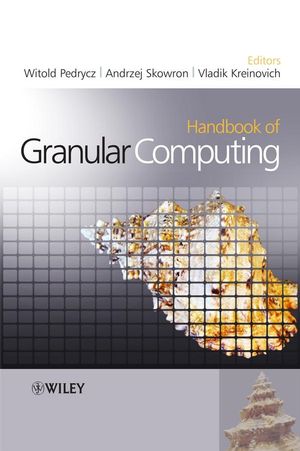Handbook of Granular ComputingISBN: 978-0-470-03554-2
Hardcover
1148 pages
August 2008
 |
||||||
Although the notion is a relatively recent one, the notions and
principles of Granular Computing (GrC) have appeared in a different
guise in many related fields including granularity in Artificial
Intelligence, interval computing, cluster analysis, quotient space
theory and many others. Recent years have witnessed a renewed and
expanding interest in the topic as it begins to play a key role in
bioinformatics, e-commerce, machine learning, security, data mining
and wireless mobile computing when it comes to the issues of
effectiveness, robustness and uncertainty.
The Handbook of Granular Computing offers a comprehensive reference source for the granular computing community, edited by and with contributions from leading experts in the field.
- Includes chapters covering the foundations of granular computing, interval analysis and fuzzy set theory; hybrid methods and models of granular computing; and applications and case studies.
- Divided into 5 sections: Preliminaries, Fundamentals, Methodology and Algorithms, Development of Hybrid Models and Applications and Case Studies.
- Presents the flow of ideas in a systematic, well-organized manner, starting with the concepts and motivation and proceeding to detailed design that materializes in specific algorithms, applications and case studies.
- Provides the reader with a self-contained reference that includes all pre-requisite knowledge, augmented with step-by-step explanations of more advanced concepts.
The Handbook of Granular Computing represents a significant and valuable contribution to the literature and will appeal to a broad audience including researchers, students and practitioners in the fields of Computational Intelligence, pattern recognition, fuzzy sets and neural networks, system modelling, operations research and bioinformatics.



